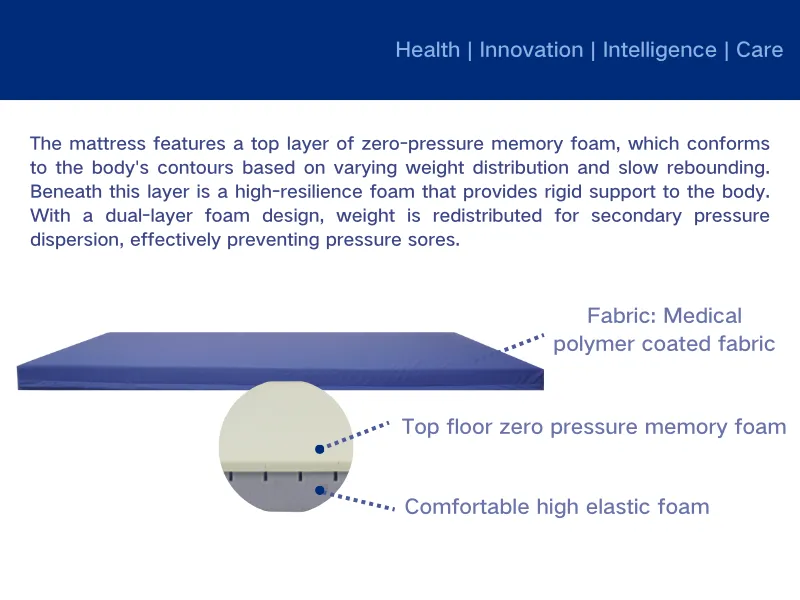Stretcher Mattress: An Important Guarantee for the Transportation of Life
In the field of medical rescue, although ambulance stretcher mattresses may seem like auxiliary tools, they play a crucial role as key equipment to ensure the safety and comfort of patients during transportation, providing strong support for the smooth implementation of medical emergency work.

Special Design and Function of Stretcher Mattresses
Ergonomic fit: The design of the ambulance stretcher mattresss fully considers the curves and mechanical principles of the human body. Its shape and thickness can evenly distribute the pressure on the patient's body, avoiding problems such as pressure ulcers caused by excessive local pressure during long-term transportation. For example, the back and hip areas of a mattress are usually thickened to better support the body's main weight-bearing areas and reduce discomfort for patients.
Convenient fixation and connection: To ensure the safety of patients during transportation, the stretcher bed mattress is equipped with specialized fixation devices. These devices can firmly fix the patient on the mattress, preventing displacement or slipping of the patient during handling, going up and down stairs, bumpy roads, and other situations. At the same time, there are convenient connection methods between the mattress and stretcher, such as buckles, straps, etc., which can quickly and tightly combine the mattress and stretcher together, making it easy for medical staff to operate.
Breathability and Waterproof Performance: Considering that patients may lie on the stretcher mattress for a long time and may face various environments during the rescue process, the mattress needs to have good breathability and waterproof performance. Breathable design can ensure normal breathing of the patient's skin, reduce stuffiness and sweat accumulation, and lower the risk of infection; The waterproof function can prevent liquids such as blood, body fluids, or rainwater from penetrating into the interior of the mattress, maintaining the cleanliness and hygiene of the stretcher mattress, facilitating cleaning and disinfection, and extending the service life of the mattress.
Material Selection for Stretcher Mattresses
Buffer material: The core cushioning material of stretcher mattresses is usually high-density sponge or memory foam. High density sponge has good elasticity and support, which can effectively disperse pressure and provide comfortable support for patients. Memory foam can adaptively adjust according to the shape and weight of the human body, fit the body curve, further improve comfort, and reduce the impact of vibration on the patient's body.
Surface material: The surface material is often made of waterproof, wear-resistant, and easy to clean synthetic materials, such as polyurethane coated fabrics. This material not only has excellent waterproof performance, but also has a certain degree of wear resistance, making it less likely to be scratched or damaged during the transportation of stretcher mattresses. At the same time, its smooth surface makes cleaning work simple, simply wipe with a damp cloth or disinfect with disinfectant, which can quickly meet the strict hygiene requirements in medical emergencies.
-
Sleep Tracking Mattress GuideNewsJul.28,2025
-
Silicone Mattress for Everyday ComfortNewsJul.28,2025
-
Mattress for Pressure Point ReliefNewsJul.28,2025
-
Customized Comfort with Specialized MattressesNewsJul.28,2025
-
Cool Gel Foam Mattress for Better SleepNewsJul.28,2025
-
Coir and Foam Mattress GuideNewsJul.28,2025
-
Ambulance Stretcher Mattress: Reliable Comfort on the MoveNewsJul.28,2025

